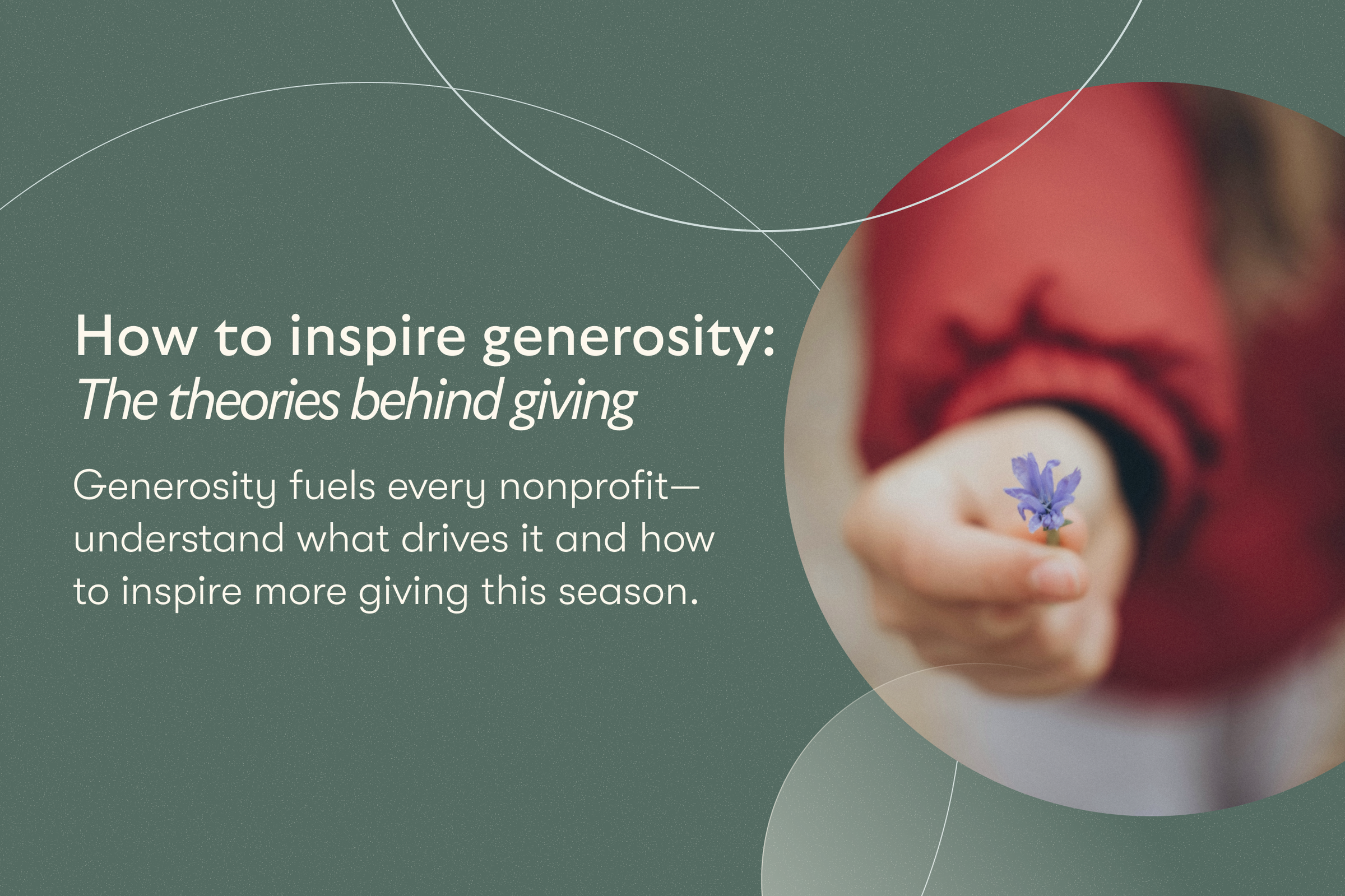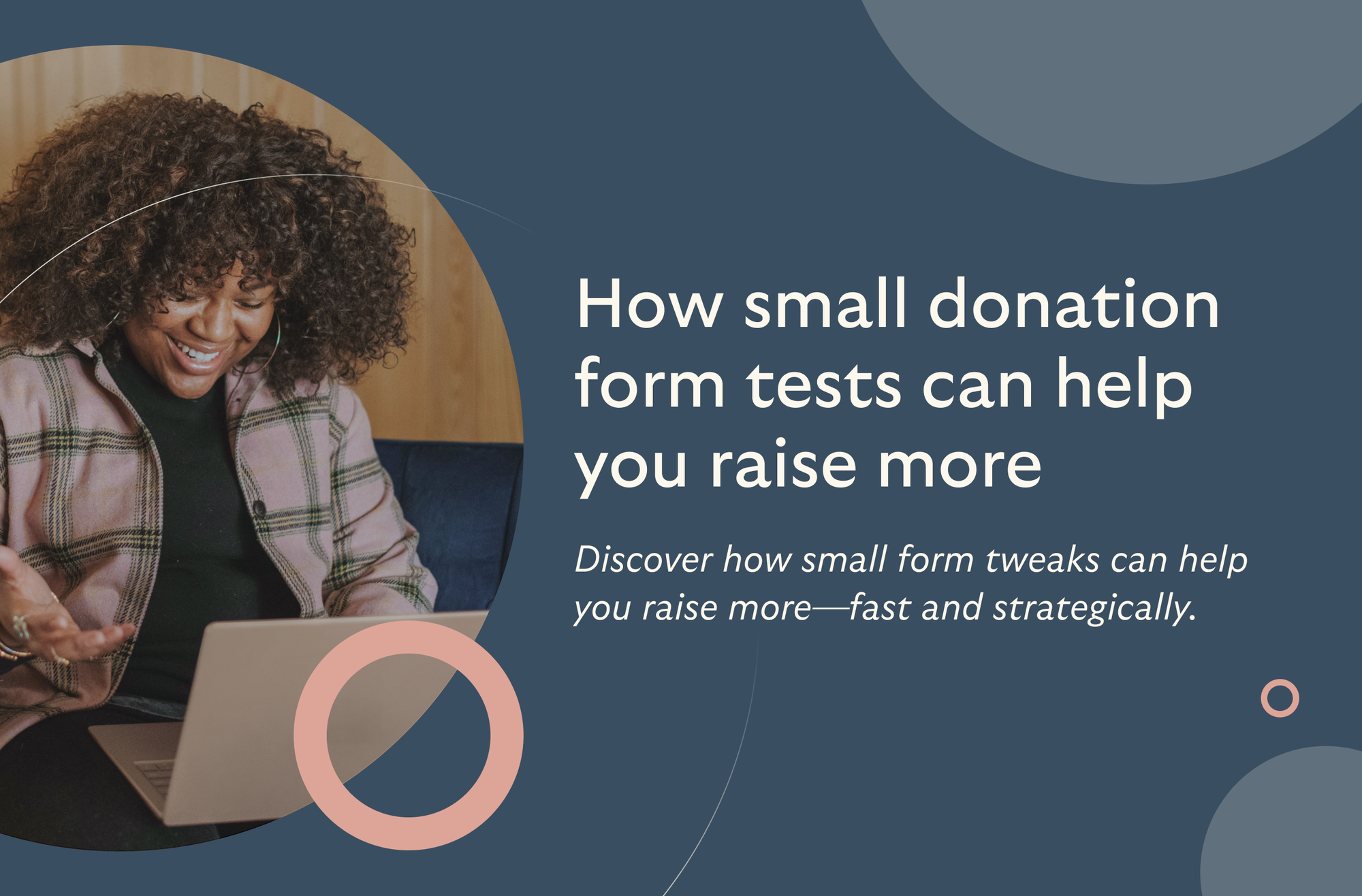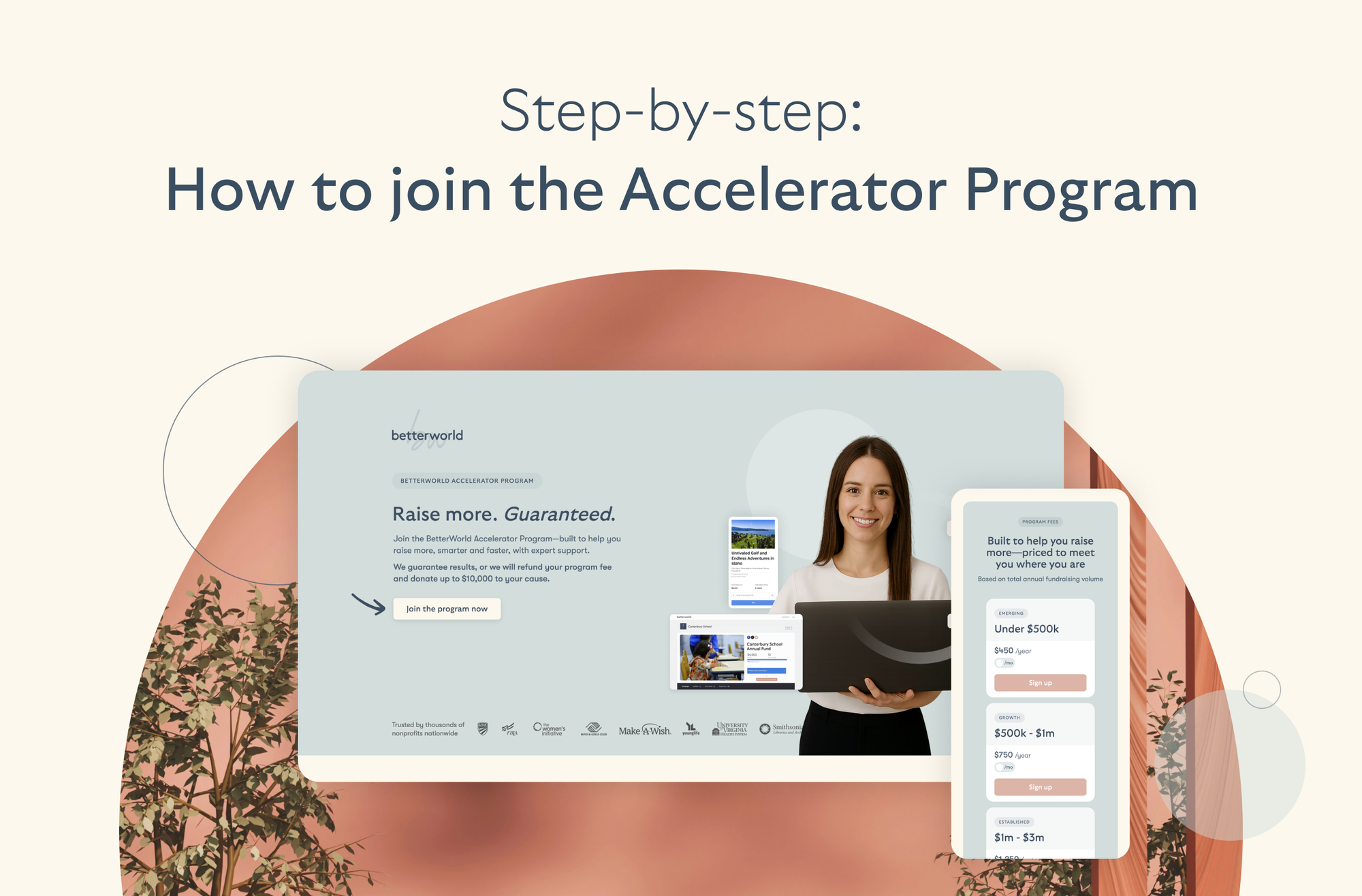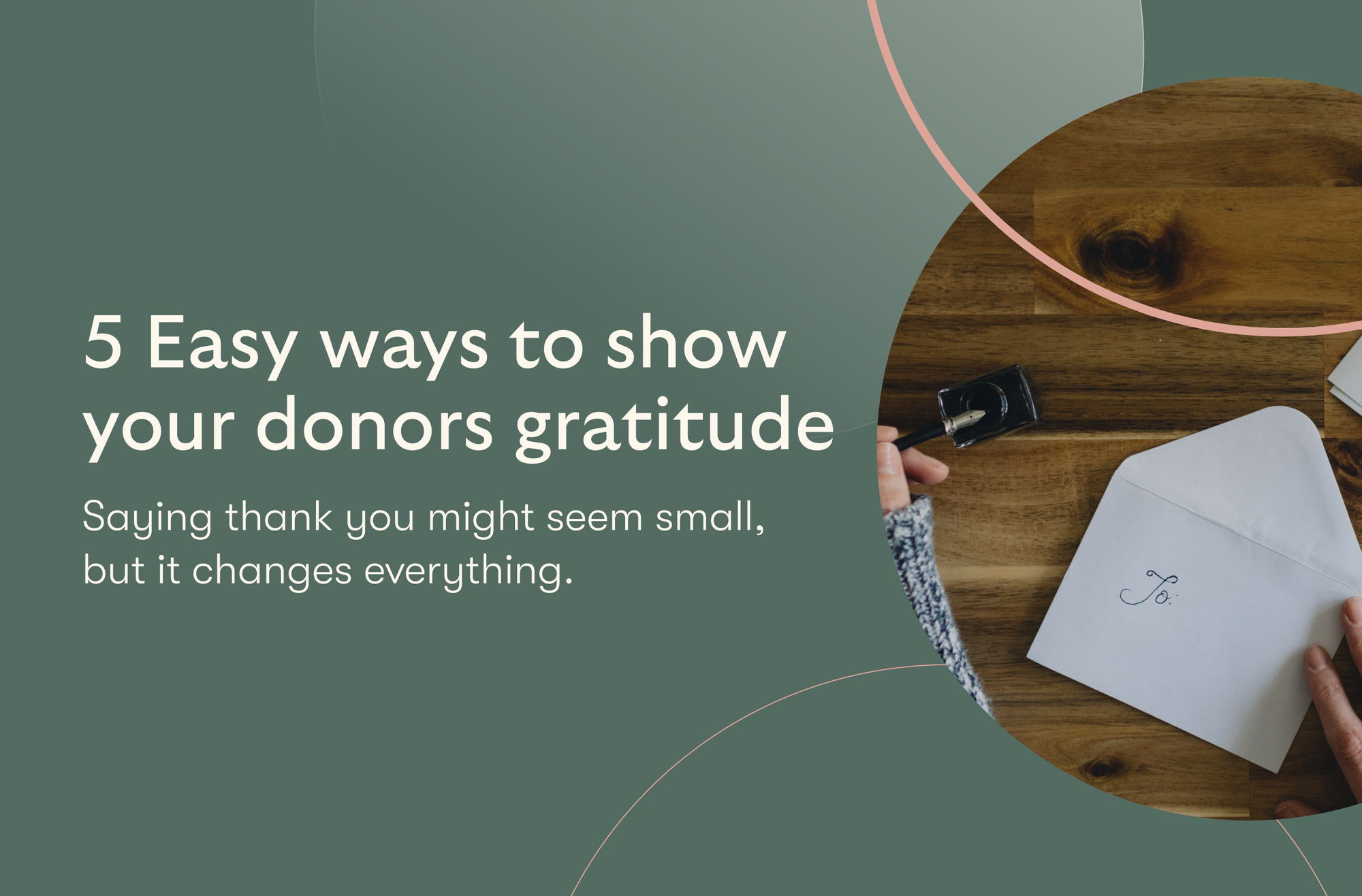Select and customize the fundraising method best suited for your organization
BetterWorld seamlessly integrates with both online and in-person auctions
Impress donors with creative raffle items and elegant online raffles
Create attractive donation pages that maximize donor impact and boost online giving
How to inspire generosity: The theories behind giving
By Team BetterWorld on

It’s not an endangered species, but scientists are studying it as if it were, and that’s the concept of generosity. As a nonprofit organization, your livelihood relies on generosity as a primary resource. It's time to understand how generosity works, what inspires it, and how your mission can maximize its impact through effective messaging. Let’s take a look at a few theories behind why people give and what steps you can take to make this giving season the most impactful yet.
Warm-glow giving
The Warm-Glow Theory (originally proposed by economist James Andreoni in 1989) explains that people give not only to help others, but also because giving itself feels good—it produces a “warm glow” of emotional satisfaction. The key for charities is to intentionally design experiences, messages, and systems that amplify that warm glow, without making it feel manipulative or transactional.
Rather than focusing solely on needs or deficits (“Help us meet our goal”), remind supporters how giving feels. Use emotionally positive language in your post-donation messages and add optimistic, beautiful imagery that reinforces positive emotions.
The warm glow is strongest when donors can see or imagine the outcome quickly. Use small, concrete impact statements: “Your $25 just filled a classroom with books.” “You’ve funded 10 hot meals today.” Avoid excessively analytical appeals (“97% of funds go to X program”), which can dampen warm-glow motivation.
Instead, balance logic with emotion. All of this strengthens the neural feedback loop between giving and pleasure, making donors more likely to repeat the behavior.
Empathy altruism hypothesis
Proposed by psychologist C. Daniel Batson, the hypothesis states that when people feel empathy (compassion, emotional connection) toward someone in need, they are motivated to help — not for personal gain, but purely to alleviate the other person’s suffering.
This kind of altruism differs from the “warm glow” of giving for internal reward. Here, the focus is on the other person’s experience. So, the question for a charity is: How do we help people feel empathy—not just sympathy—for the people or causes we serve?
Empathy requires emotional connection, not just information. That is why your organization’s stories are your greatest asset and why sharing them can inspire radical generosity. Show the tragedy and the transformation. Show the despair and the hope.
Share images of individuals up close. The more vivid a picture you can create of those you are serving, the better. Neuroscience shows that facial expressions trigger mirror neurons, helping the viewer feel the subject’s emotions, the biological foundation of empathy.
People give because they feel, according to this theory. Charities can harness this by designing communications that make supporters not just aware of the need, but emotionally invested in another person’s story, confident that their help matters, and hopeful about the difference they can make.
Social influence
Generosity is contagious! Studies have shown that people who are aware of others’ giving are more likely to donate themselves. A single person can have a profound impact on a community. This is why public recognition of donors is not only a way to show gratitude but also a powerful tool to expand the donor pool.
Using language that invites people into your donor community is also effective. Use phrases like “Join us…” or “others like you donated”. Publicly acknowledge and celebrate both big and small donations. Make it a celebration that potential donors won’t want to miss out on!
Helper therapy principle
The helper therapy principle (also known as the “helper effect”) states that individuals who help others derive psychological and social benefits. Those who are generous with their time, social support, and volunteering can experience enhanced self-esteem, a sense of purpose, community belonging, improved psychological well-being, increased longevity, and overall life satisfaction.
In your messaging, emphasize how donors themselves gain fulfillment, connection, and meaning—not just what happens to beneficiaries. Offering service opportunities rather than asking for money can invite a donor who may not be ready to commit financially. Once they start to feel the ‘helper effect,’ their financial commitment might be a bit easier.
Try BetterWorld’s robust suite of charity & nonprofit fundraising tools for FREE!
Build trust through transparency
At the end of the day, no matter the reason people are moved to give, it hinges on whether they trust your organization. So, beyond the messaging and imagery and the invitation to your community, how do you build trust with your donors? Transparency. In an overly curated and retouched society, this might feel like an uncomfortable exercise, but it is genuinely the bedrock to building trust in your community.
Transparency in a nonprofit organization involves sharing both the successes and failures, as well as the ups and downs. It means being honest when you’ve missed the mark and also being illustrative about your hopes and dreams. With the appropriate audience, it means being an open book when it comes to finances. The greater the transparency, the greater your potential to raise significant funds.
Model and celebrate generosity
Is generosity something you're born with, or is it cultivated? The answer is both. Generosity is an inherent part of our biological makeup. It promotes survival, bonding, and trust, which benefit both individuals and groups. While the capacity for generosity may be innate, whether and how it manifests is shaped by upbringing, culture, and social norms, which means your organization has an excellent opportunity to be a model of generosity in the community.
Your generosity doesn’t have to be just monetary. It shows up in the way it treats its employees, volunteers, and, of course, the people/places it serves. What would it look like to demonstrate radical generosity? According to research, gratitude fuels generosity. People who regularly reflect on gratitude tend to allocate more time and resources to others. Here’s your call to go above and beyond with your gratitude.
Could your generosity of spirit spark generosity in your community? Like a seed, generosity requires fertile soil—values, modeling, and community reinforcement—to grow.
Awaken the generosity in your community
Generosity isn’t rare—it’s a natural part of who we are. What makes it grow is how we nurture it through empathy, gratitude, and connection. As a nonprofit, your most significant opportunity lies not only in asking for support, but also in awakening the generosity that already exists within your community. When you lead with empathy, transparency, and gratitude, you don’t just raise funds—you raise hope, connection, and the collective belief that giving changes lives, including our own.
If you’d like a partner on this journey, don’t hesitate to reach out. We’d love to walk alongside you and help build a better world together. Click to schedule a campaign assessment with one of our experts!

Join 100,000+ amazing nonprofits, organizations, and fundraisers on BetterWorld

Let our FREE fundraising tools help you raise more funds with less effort







